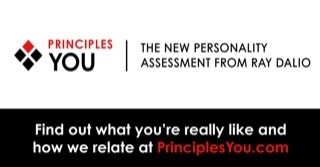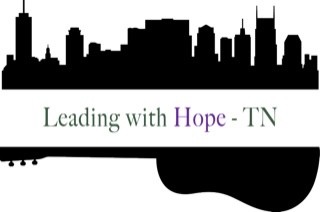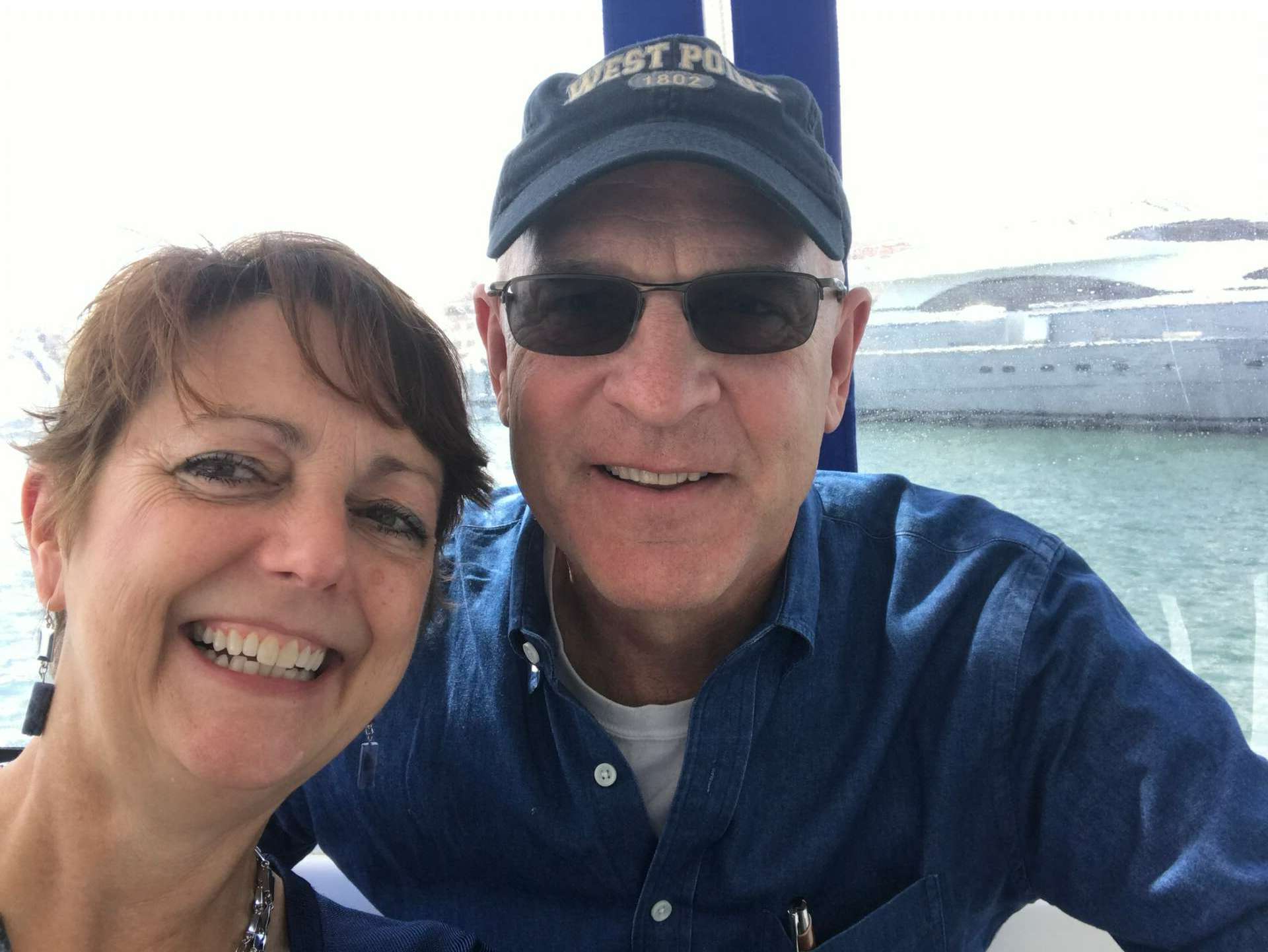We were lucky to catch up with J0hn Hope recently and have shared our conversation below.
John, thanks for taking the time to share your stories with us today To kick things off, we’d love to hear about things you or your brand do that diverge from the industry standard.
Leading With Hope TN is a small consulting organization that focuses on leadership. We are a husband and wife team based in Nashville but have a national reach via social media and Zoom capabilities.
Kristi Hope brings over 35 years of experience and expertise from corporate America, including such corporates as Lockheed-Martin, Honeywell, and AIA Textron. She has spent additional years as an Executive Recruiter for Stanton Chase and as an independent recruiter focused on aerospace and defense, and manufacturing. She has an Electrical Engineering degree, MBA, and a master’s degree in Aeronautical Engineering.
John Hope is a retired Army officer with over 35 years of service to the nation and brings significant education, experience, and expertise to Team Hope. He has served at all levels of command, from Platoon to Brigade, and was awarded the skill identifier of Army Strategist due to his Fellowship with the Chief of Staff of the Army Strategic Studies Group. Unlike many other leadership coaches, John has led Soldiers in combat, including three tours in Iraq and one tour in Afghanistan. He has an Engineering degree from West Point, a master’s degree from the Army War College, as well as a Military History degree.
Coaching has become a ubiquitous label. We focus strictly on leadership, which can and does include corporate culture and corporate charter workshops. We also incorporate numerous personality assessments customized by our customers for self-learning and education and also for team learning and team development.
Team Hope’s philosophy is that leadership begins in and with your Inner Core. Your Inner Core contains your programming, your purpose, and your self-concept. Values, beliefs, references, and behavioral tendencies also reside in your Inner Core. Leading with Hope TN uses a variety of personality assessments to assist our clients in self-learning and leadership development by exploring their Inner Core before anything else. Your Outer Core is what the world sees. All effective leadership development must originate in the Inner Core in order to be transferred to the Outer Core.
Kristi and John are certified trainers for the Enneagram, the Input-Output Processing Template (IOPT), Myers-Briggs Type Indicator, the DiSC assessment, the California Psychological Index (CPI) 260, and the newly filed PrinciplesYou and PrinciplesUS assessments.
Each engagement includes reviewing assessment results in one-on-one engagements as well as team engagements. Team Hope then assists workshop clients to develop their own Core Purpose Statement, or Team Mission Statement depending on client priorities. Lastly, Kristi and John create a plan to accomplish personal and collective goals, the metrics for those goals, and a feasible timeline to accomplish those goals. Individual and group coaching continues as per ‘ direction.


J0hn, love having you share your insights with us. Before we ask you more questions, maybe you can take a moment to introduce yourself to our readers who might have missed our earlier conversations?
My purpose is selfless service; leadership is our passion. Our mission is to help you become a better you, and team a better team, and your business a better business.
John gave 35 years of military service to the country. He graduated from the United States Military Academy, the foremost leadership institution in the country. When he retired, he conducted two additional contractor tours in Afghanistan to support Coalition forces and saw the need for leadership development in the contractor world at all levels. The military is organized, disciplined, and detail-oriented, supporting its incredible success over time. As exemplified by the Army education system, leadership can be taught through continuous education through a progression of academic and professional schools throughout one’s career. However, the glue that binds the military tribes together starts with values, standards, and beliefs that create a vision for the future and a plan (mission) to guide actions to the accomplishment of individual and collective goals. John’s desire is to fuze his leadership education, experiences, and expertise into a deliverable workshop program that can educate and train individuals to be better leaders and achieve greater team success through close interactions and relationships.
Kristi gave 35 years of service to the United States through her participation in the corporate world. As a female, she was constantly challenged by the status quo and by the proverbial glass ceiling that limited women in team participation and advancement. Kristi experience situations of poor leadership and exemplary leadership, and performed best when mentored ad coached by exemplary leadership. She refused to be discouraged, and through continuing education and tenacity, achieved great success in numerous roles in the aerospace and defense industry. Kristi’s desire to help others mirrors John’s and she brings her corporate experiences and expertise to Leading With Hope workshops that is a value to men and women alike.


Let’s talk about resilience next – do you have a story you can share with us?
I developed my confidence and self-esteem from resiliency, tenacity, and learning from failures.
My dream was to gain admittance to West Point and become a career Army officer. Starting in Junior High, I created my academic programs and my extracurricular activities to be an ideal candidate for consideration and admission. I got above-average grades, I was a three-sport athlete, and I participated in student government and several high school clubs and associations. I received my nomination from my state Congressional Representative early in my senior year. However, I broke my neck playing football my senior year and was medically disqualified for admission. Of course, I was crushed.
I chose to attend the University of Minnesota for two years. I joined the ROTC program and did well, but West Point was still my goal. With the assistance of my deputy Professor of Military Science (PMI), I reapplied for admission. After a new and detailed physical, I was declared physically sound, and I was offered acceptance for the West Point class of 1981.
In my freshman (plebe) year, I struggled with academics. I failed calculus my second semester and was relegated to attend summer school, or the Summer Term Academic Program (STAP). With only one class to study, I immersed myself in the study of calculus, and with the assistance of the Deputy Head of the Math Department, an Army Colonel, I received an “A” for the summer term and thus was able to stay at the Academy. I continued to struggle with academics for the next three years but ended up making the Dean’s List for both semesters of my Senior year. On May 27, 1981, I graduated from West Point and was commissioned in the U.S. Army as a Second Lieutenant in the U.S. Army, a dream come true.
I attended the Infantry Officer Basic Course without incident and then attended Ranger School. Ranger School is an eight-week leadership course, a course where they make you cold, wet, tired, hungry, and miserable and then have you lead your peers under simulated combat conditions. Ranger School consists of three phases: the Ft. Benning phase, the Mountain phase, and the Florida phase. Each Ranger student must pass a series of skill tests and pass two patrols in each phase as a patrol leader or assistant patrol leader. It is a brutal course. I failed my first leadership patrol in the Mountain Phase, so my next leadership opportunity would pass or fail me. With the assistance of my Ranger buddies, I passed my next two patrols in the mountains and then passed my two required leadership patrols in Florida. In January 1982, I graduated from Ranger School and wore the coveted Ranger Tab for the rest of my 35-year career.
My entire career consisted of doing really hard things and I advanced in rank and was given higher positions of authority. In addition to graduating from Ranger School, I attended numerous other rigorous Army leadership schools. I was able to rise to each challenge and excel, knowing that I could overcome significant obstacles. My confidence and self-esteem increased month by month and year by year, as I was able to reference my previous challenges and how I found ways to overcome failure and learn from my mistakes. I knew if I could graduate from West Point and graduate from Ranger School, there was no other challenge I could not master. I knew I could do really hard things and that confidence has served me well in all life’s endeavors.

How’d you meet your business partner?
As an Army Colonel, I had the honor to be selected as one of twenty Army officers for the Chief of Staff of the Army Strategic Studies Group, Cohort II, in 2013. Our mission and mandate from GEN Raymond Odierno, was to envision the Army in the year 2035 and beyond and report our findings to him in the way of weekly briefings and white papers.
The cohort broke up into groups of five, each with a different focus. I was a member of the “maneuver and mobility” subgroup, chartered to envision what maneuver and mobility in 2035, based upon what the Army had experienced or was experiencing in the Iraq and Afghanistan theaters of operations. GEN Odierno’s specific guidance was to explore ways to “get off the roads, and most of the Army casualties were the result of Improvised Explosive Devices IEDs) placed under or alongside the roadways. I had a specific interest in this initiative, as I had been combat wounded by an IED during my first tour in Iraq in 2004.
Getting off the roads pretty much meant getting into the air, which was already happening due to the family of helicopters fielded by the Army. The smallest helicopter, the OH-58 Kiowa, was two-man reconnaissance helicopter, that was actually being phased out in the near future. The Army workhorse, the UH-60 Blackhawk, was the primary mover for personnel and cargo, and was considered the “medium” lift capacity. The heavy lifting was done CH-437 Chinook helicopter, the familiar double-rotor cargo airframe who’s existence went back to the Vietnam War. The Army also had two types of attack helicopter, the OH-60 Little Bird, that was mostly dedicated to special operations units. The attack workhorse was the AH-68 Apache helicopter designed as an anti-tank/anti-armor mission, and for long range maneuver deep into enemy territory.
Our team had an Army Aviation Officer, so we had a very good understanding where the future of vertical lift was going. Helicopters helped us get off the roads, but if one was lost in combat, there were usually fatalities involved. All of the services were looking at eventual autonomous aircraft without pilots, and unmanned aerial vehicles (UAVs) were already being fielded for reconnaissance and intelligence collection.
A fellow Colonel and I did a deep dive into the future of unmanned aircraft, with the hypothesis that UAVs would be future of Army aviation. We developed a concept of a family of UAVs, light, medium, and heavy, much like the existing manned helicopter fleet. We envisioned a light UAV or drone that could carry up to one hundred pounds. The role of this light UAV would be mostly urgent resupply of ammunition, water, medical supplies, critical parts, etc. and could be guided by GPS or visual control. As a result, sensing platforms of numerous types would be required.
The second family of UAVs could carry up to five hundred pounds. This would be for support to units forward or in the rear, and would act like or be equivalent to the proposed Amazon UAV delivery service. This UAV would medium lift and could transport classes of supply as listed above, but could also serve as a scouting and reconnaissance vehicle, as well as an “on-call” ambulance or medical evacuation vehicle in circumstances where a manned medivac would be a risk.
Lastly, there would be a heavy lift UAV. This UAV would have the capacity to carry up to a ton of weight, and could be mated with the standard metal Air Force 463L pallet, that is used on tactical Air Force aircraft such as the C-130 Hercules or strategic aircraft such as the C-17 Globemaster III or the C5 Galaxy.
As we began our research, we found out that the U.S. Marine Corps was far out ahead of the U.S. Army in terms of UAV development, due to ship-to-ship operations and ship-to-shore operations. They had also figured out that each UAV would need to accommodate a range of sensors for night operations and other limited visibility operations, but also include other data- equipment like forward looking infrared radar (FLIR), GPS, electronic surveillance, etc. So we started looking around, researching on the internet, making phone calls, etc., to anyone who could help us out.
The Marines were glad to share some of their information, and it was convenient that the Marine Base at Quantico, VA was just down I-95. Wherever we talked to or communicated with Marines, one name came up frequently, and that name was Kristi Moe, a civilian consultant. She was considered the Subject Matter Expert (SME) by the Marine Corps on many things UAV and electronics related. It seems like a really good idea to talk to her. I got an email address from someone at Quantico, and sent her an email giving her my background and my requests for information on where the future of UAVs for the military. It took a few days, but I was able to schedule a meeting with her. And I did!
She was very attractive, very intelligent, and very experienced in all things aviation, autonomous aerial vehicles and sensing platforms. And she wasn’t married. Marine Corps brass was constantly trying to marry her off to a Marine, preferably a Marine aviator. I won, they lost. Kristi Moe is now Kristi Hope, my wife and business partner, and my true companion.

Contact Info:
- Website: https://www.lwhtn.com
- Facebook: https://www.facebook.com/kristi.hope.336
- Linkedin: https://www.linkedin.com/in/johnchope
- Twitter: @johnchope1
Image Credits
Credits to John and Kristi Hope


